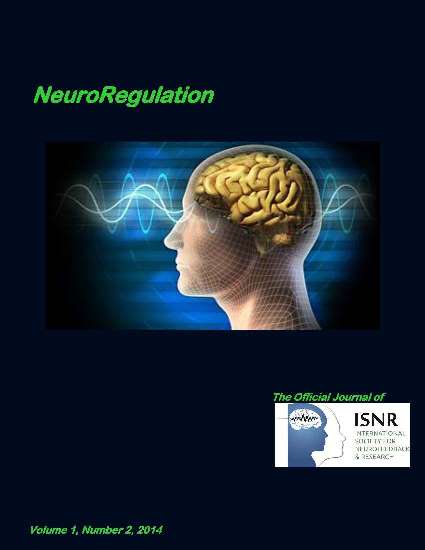QEEG and 19-Channel Neurofeedback as a Clinical Evaluation Tool for Children with Attention, Learning and Emotional Problems
DOI:
https://doi.org/10.15540/nr.1.2.173Keywords:
QEEG, 19-channel neurofeedback, z-score neurofeedbackAbstract
Attention, learning and emotional problems can have different causes that cannot be easily and clearly distinguished by clinical testing methods. But, QEEG and, even more so, live 19-channel Z-score training under different task conditions can both give very detailed insights about the specific functioning and dysregulations of an individual’s brain. The clinical intake evaluation of the child is optimized by including a quantitative, neurometric analysis of an eyes open (EO) and eyes closed (EC) EEG acquisition combined with a real-time analysis of the child’s (in vivo) brain functioning during a specific set of conditions, as described below. This method was developed and refined with more than 300 children who were tested between June 2012 and April 2014. The goal is to get as much information as possible in only one session lasting 45 to 60 minutes. The different parts of the evaluation consist of: eyes open (EO) and eyes closed (EC) collection of data, display of the actual brain waves, listing of the Z-score values (also presented as plots or instant brain maps with different task conditions), followed by games to play with a challenge condition. In addition, current source density (CSD) sLORETA of the different wave frequencies (usually delta, theta, alpha, beta, and gamma bands), distribution and velocity are shown as they change, as well as when the brain evaluates emotions. The session ends with a brief, individual 19-channel training with video feedback. Because of the usefulness of the information obtained from using this QEEG method, the author recommends that QEEG and an interactive neurofeedback session be included as a standard component in the diagnosis of and treatment planning for children with attention, learning and emotional problems.Downloads
Published
2014-11-21
Issue
Section
Clinical Corner
License
Authors who publish with this journal agree to the following terms:- Authors retain copyright and grant the journal right of first publication with the work simultaneously licensed under a Creative Commons Attribution License (CC-BY) that allows others to share the work with an acknowledgement of the work's authorship and initial publication in this journal.
- Authors are able to enter into separate, additional contractual arrangements for the non-exclusive distribution of the journal's published version of the work (e.g., post it to an institutional repository or publish it in a book), with an acknowledgement of its initial publication in this journal.
- Authors are permitted and encouraged to post their work online (e.g., in institutional repositories or on their website) prior to and during the submission process, as it can lead to productive exchanges, as well as earlier and greater citation of published work (See The Effect of Open Access).











